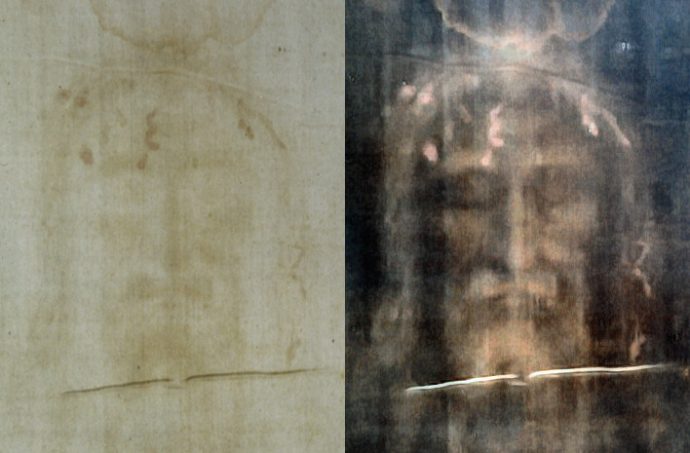The story of the Shroud of Turin continues to be one of the most fascinating stories — too bad too few people know the facts. Here is Myra Adams:
From a distance and under the microscope, the relic’s authenticity holds up. It’s astonishing.
“Nothing is impossible with God.” — (Luke 1:37)
With his comforting words to Mary, the angel Gabriel explains the miracle not only of Jesus’s conception but also of his resurrection, which we celebrate tomorrow. We who know the Risen Lord know that at Easter we commemorate the supreme event in all of human history, and so any physical proof we find of Christ’s resurrection demands our attention and awe. Countless Christians worldwide maintain that such proof exists: It is the Shroud of Turin, revered as the authentic burial cloth of Jesus Christ.
The earliest undisputed historical records place the Shroud in Lirey, France, between 1353 and 1357. Before that, according to various written sources, the Shroud traveled around the Middle East and Europe. It had once been in the possession of the Knights Templar, according to a researcher at the Vatican Secret Archives.
Since the 17th century, the sacred cloth has been housed in the Cathedral of Saint John the Baptist in Turin, Italy, except for a few years in the middle of the last century. Italian authorities knew that Hitler was had designs on the Shroud, so in 1939 it was secretly moved to an abbey, the Sanctuary of Montevergine, in southern Italy. The Nazis came within inches of finding it. Prayers from the Benedictine monks there diverted them. In 1946, the Shroud was returned to Turin, where it now resides in a heavily fortified underground vault.
Many in the secular media dismiss the Shroud as a “medieval forgery” or a clever hoax. That characterization is based largely on debunked carbon-14 tests. In 1988 they led researchers to estimate a date of origin between 1260 and 1390, but the samples tested came from edges that were added to fortify the cloth after it was damaged in a fire in 1532. Today we see lines caused by the fire. Heated silver in the Shroud’s storage box created distracting shapes that now border the man’s image.
Read more: National Review
Image credit: Wikipedia.

